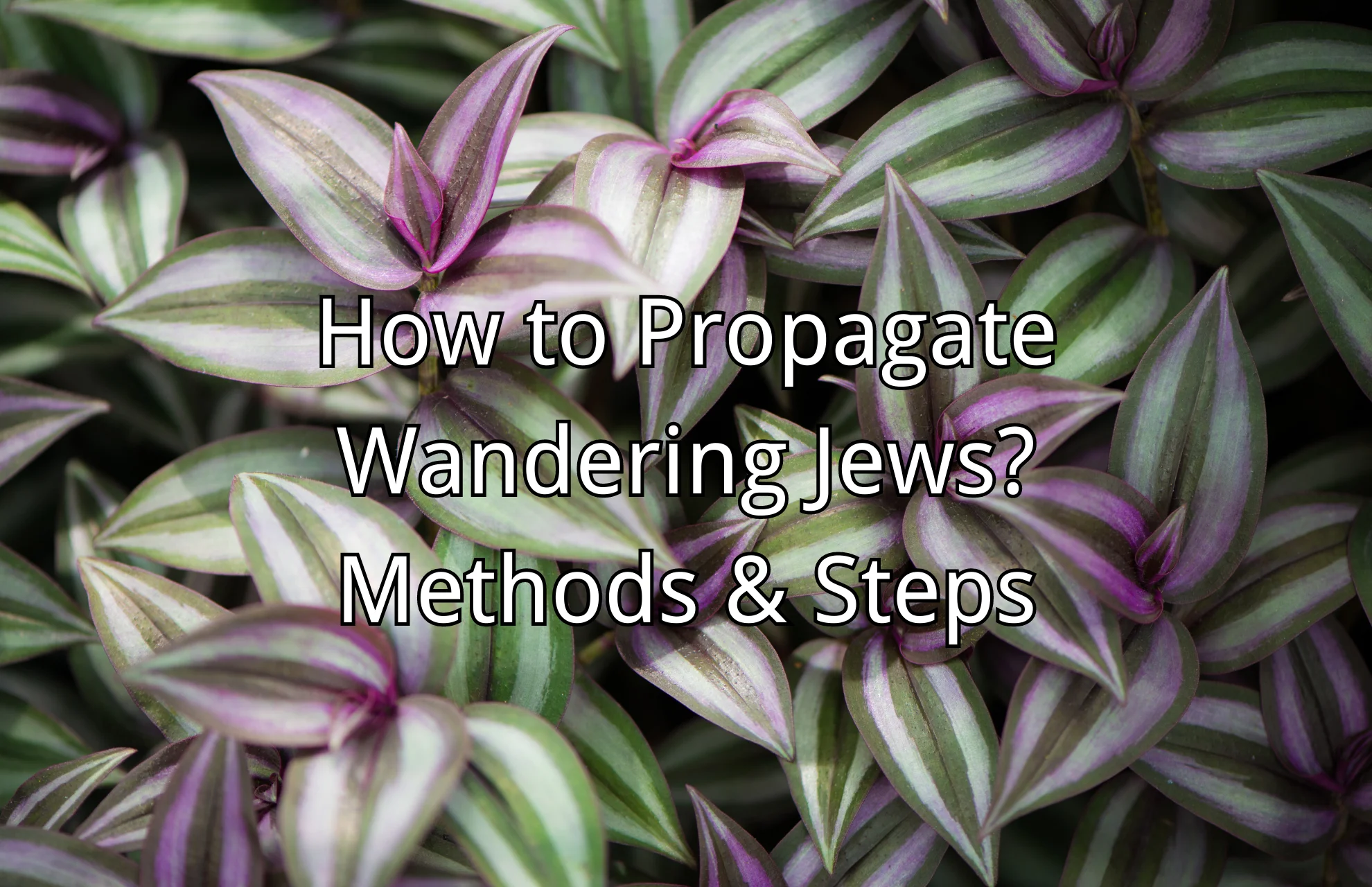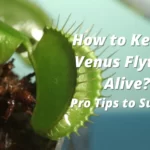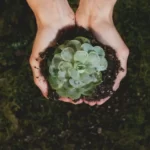To learn how to propagate Wandering Jews as many as you can, keep reading. It’s one of the simplest plants to propagate.
With just a few tools and a few easy steps, Wandering Jew (also known as Wandering Dude) can be propagated. It is one of the toughest plants and is distinguished by its colorful, appealing foliage. You don’t need to be concerned about destroying this plant.
Anyone with a pair of scissors can take cuttings of the wandering jew, making it the easiest plant to grow. Just take leaf-node-containing, 1 to 2-inch-long cuttings from the plant. You can either propagate the cuttings in water or a moist potting mix. Maintain the setup in a location with excellent indirect light.
Let’s dive in and discover how to propagate this amazing plant if you’re ready to get started!
How Do You Propagate a Wandering Jew?
Wandering Jew plants can be propagated in a number of ways so that they can develop to their full potential. The most effective methods include:
- Propagating Wandering Jew plant cuttings in water (in my opinion, the best way)
- Propagating Wandering Jew plant cuttings in soil
Propagating in Water
One of the more conventional techniques of plant propagation is water-based propagation. For plants like the Wandering Jew plant with thick stems, it works especially well. To do this:

- Step 1: Using a clean, sharp blade or a pair of sharp scissors, cut 4- to 6-inch-long cuttings from the healthy stems of your plant at a 45-degree angle, just beneath a leaf node. Make sure the lowest set of leaves on each stem are cut off. The term “wandering jew” is also known as the “inch plant.”
- Optional: Choose a rooting hormone, and then dip the fresh cutting’s clean edge into it. Although some claim that rooting hormones containing synthetic auxins make their plants stronger, it is rarely thought to be crucial for propagation.
- Step 2: Make sure the bottom leaf node is submerged when you immerse your cuttings in water in a glass or jar. Maintain the glass jar in direct but bright light. New roots ought to begin to appear within a week or so.
- Step 3: Plant your cuttings in an all-purpose potting mix after about two weeks with the plants submerged (or at least when the new roots are a few inches long). As time goes on and your green thumb develops, you’ll keep observing new growth!
Propagating in Soil
This lovely plant can be multiplied just as successfully and probably with the same success in moist soil. It is only slightly more involved in this instance.
- Step 1: Start by repeatedly cutting at the ends of branches with a clean, sharp blade. Aim to create a slight 45-degree angle under a leaf node. The cuttings should be four to six inches in length. Remove the lowermost set of leaves from the stem of each cutting.
- Optional: Choose a rooting hormone, and then dip the fresh cutting’s clean edge into it. Even though some people insist that rooting hormones with synthetic auxins make their plants stronger, it is rarely thought of as being crucial for propagation.
- Step 2: All-purpose potting soil should be added to a hanging basket or 6-inch pot until it is 1 inch below the top of the container. Poking holes about 2 inches deep and spacing them evenly around the pot, plant one cutting in each hole. To secure the stems, gently rub the soil over them.
- Step 3: Regularly water your cuttings to evenly moisten the soil.
- Step 4: Last but not least, put the plant in a spot with lots of indirect light. In a few months, a new plant with lush, green leaves will appear.
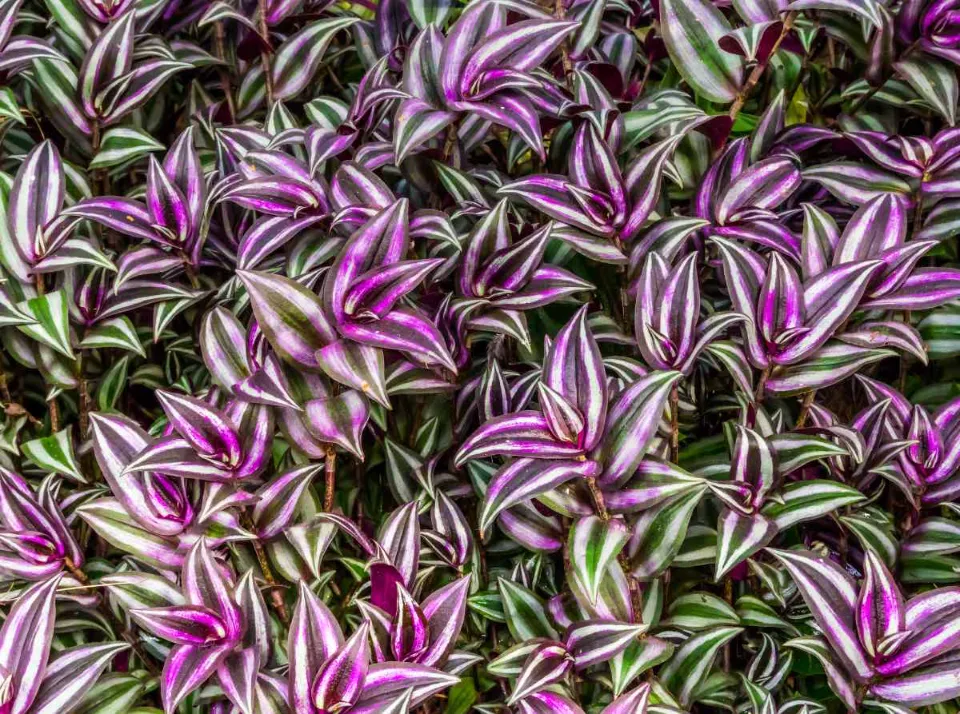
How Long Does Rooting Take?
Within a week, you’ll start to notice new root growth! Your stem will have developed a strong set of roots after two weeks, and if you chose to propagate in water, it can now be moved to well-draining potting soil to continue growing. You’ll begin to notice fresh growth above the soil after about a month!
Remember that the location of your plant in your home can affect the rate of germination and the timing of new growth.
However, it must be out of direct sunlight. Your new plant must be placed in a well-lit area. Depending on how quickly your new plant grows or if it starts to look drab or leggy, you might need to change where it lives in your house.
Wandering Jew Plant Care
You just successfully propagated your first Wandering Jew plant, which is wonderful! Here is some advice on how to take care of your new houseplant as well as some problems that might arise as it ages.
Light
Although the creeping-inch plants prefer bright indirect light, they also thrive in brief periods of direct light. Your wandering jew plant should be placed close to a south-facing window so that it can receive at least 6 to 7 hours per day of bright indirect light. It’s also a good idea to grow spiderwort on balconies and terraces that face north.
Low light is evident when the color or variegations on the leaves begin to fade. Place your plant in a location with better lighting.
Temperature

As previously mentioned, as long as it’s kept in a warm, humid environment, this plant can be kept either indoors or outdoors. It thrives in environments that are 55 to 75 degrees Fahrenheit. The bathroom or another room with high humidity levels would be ideal for it.
Water
The wandering jew plant likes its potting mix to be kept uniformly moist at all times but not soggy at all. Water your wandering jew plant once per week or as soon as the top soil dries out in indirect light conditions. Keep the soil from completely drying out.
To make sure that the soil in your dried potting mix absorbs all the water and doesn’t simply run out of the planter, water it in batches. Once the soil has had a chance to absorb the water, rewater until the water runs out of the drainage hole at the bottom of the planter.
Soil
The soil that the creeping inch plant grows in is not particularly important to it. A rich, well-draining potting soil is ideal for it to grow. The most important things to remember are to aerate the soil occasionally and to let the topsoil dry out between waterings.
It is crucial that the soil be well-draining and well-aerated because the spiderwort plant prefers moist potting soil. This will help prevent root rot.
Fertilizers
For your wandering jew plant, use a generic, well-balanced houseplant fertilizer. Every 15 days, they respond well to both root and foliar applications because they are not heavy feeders. Use a good quality fertilizer like the Ugaoo Plant Tonic for this. Using NPK is also a good idea.
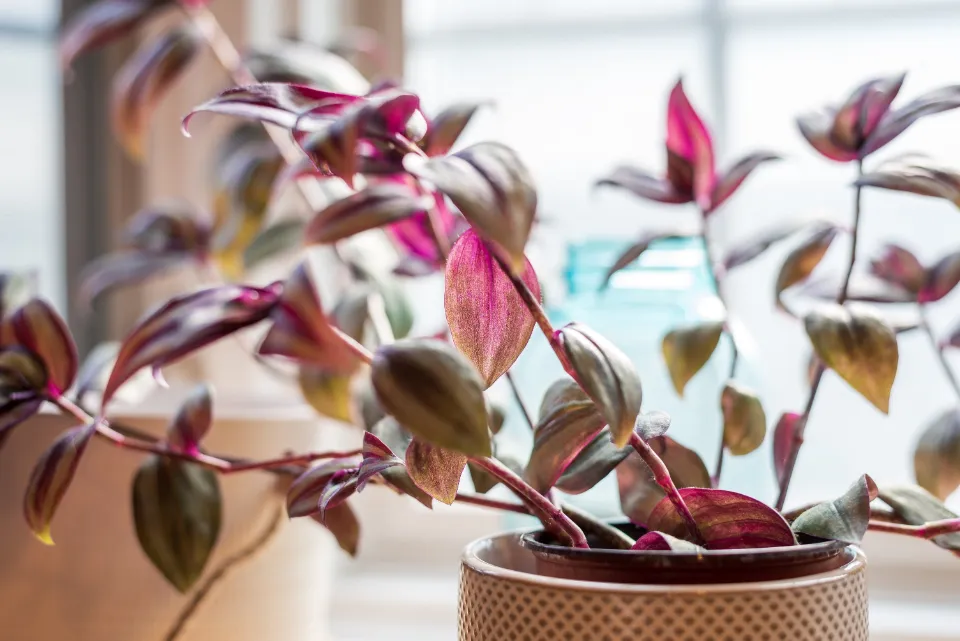
Apply the fertilizer once every 15 days directly to the roots after diluting it as directed. You can also apply it once every 15 days to the leaves by misting them with it. Larger, more dazzling leaves are a guarantee of foliar application. Do not, however, overfeed the plant as this will result in the loss of variegation on the leaves.
Pruning
Pruning is not needed specifically for the spiderwort plant. For the creeping inch plant, pruning is necessary for two situations: first, to get rid of any dead foliage; second, to control the plant’s form and growth pattern.
The spiderwort plant becomes leggy when left to grow on its own; to keep your plant fuller, periodically prune the stems or pinch back the branches by at least one-fourth of their length.
Simply cut away stems at the desired length with clean, sharp pruning shears or scissors, cutting at an angle in between leaf nodes. Simply pinch off any dead or fading leaves, being careful to separate the leaf stalk from the main stem.
Common Problems
Every plant will occasionally encounter a problem, regardless of how to green your thumb is. For Wandering Jew plants, pests, and leggy growth are two common issues. To learn more about these issues and solutions, keep reading.
Pests
Here are a few of the most frequent pests that would like to bother you and your plant.) are going to be spider mites, aphids, and gnats. Use neem oil to get rid of any of these pests you spot around your plant or inside your house so that your plant is protected.
Particularly on a plant that has just been propagated, even a small infestation can result in significant harm. As soon as you notice any indication that these pests are present, simply spray neem oil on your plant. Enjoy your plant without pests after reapplying as necessary.
Leggy Growth
When a plant grows longer than it should, this is known as leggy growth. If it is not treated when it is first noticed, this can damage the stem and even result in the death of your plant. If your plant starts to appear leggy, it’s because it’s straining too hard to get enough light.
Your plant needs a new location to grow in order to get more natural light without getting too much direct sunlight, which is a fairly easy fix for the issue. Make sure not to remove all of the plant’s leaves when trimming away some of the legginess.
Conclusion: Propagate Wandering Jews
Okay, folks, that’s it! As you can see, growing Wandering Jew plants from cuttings isn’t particularly difficult, but it is a simple way to multiply the number of plant offspring from a mother plant.
In Indian climates, the wandering jew plant is simple to grow and can add lovely color to any backyard garden. It is a joy to grow, making it a great choice for novice plant owners.
FAQs
How Long Does It Take Wandering Jew to Root in Water?
Usually, one to four weeks pass before roots appear. Plant the cuttings in a container with light commercial potting soil when the roots are a few inches long. To give the appearance of a full-sized plant, root several cuttings and place them all in one pot.
Does Wandering Jew Like Sun Or Shade?
The right amount of light is very important to traveling Jews. They need a lot of light to maintain their bright color, but direct sunlight will burn their leaves (except for Tradescantia purple queen, which they love growing in full sun!).
How Do You Propagate a Wandering Jew Inch Plant?
Inch plants can easily be propagated by cuttings. Trim a piece of the plant (ideally, the cutting should be 3 to 4 inches long), then submerge the cut end in water. Roots should start to appear on the cutting in about a week (or less). After about a week, plant the cutting in a pot using the aforementioned planting instructions.
Does a Wandering Jew Need Soil?
Your wandering jew can be planted in a standard houseplant potting mix, but they’ll grow even more successfully in soil that contains more organic matter. Add some peat moss, perlite, and organic compost to your potting mix as a supplement.

